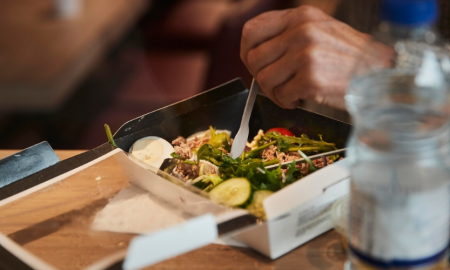
Healthy Eating Tips for Nutritious Living in Food Deserts

Living in a food desert, where access to fresh, nutritious food is scarce, can make it difficult to maintain a healthy lifestyle. These areas, typically in rural and low-income communities, are often limited to convenience stores or fast food outlets, which primarily offer processed and unhealthy options. Despite these challenges, making healthier choices by using smart strategies to prioritize nutrition is possible.
Food Desert Health Eating Tips
Planning Ahead for Better Nutrition
Sticking to a plan when grocery shopping is essential in a food desert. By creating a meal plan and shopping list before heading to the store, you can focus on nutritious, budget-friendly options. Fresh foods like whole grains, proteins, and vegetables should be the foundation of your shopping list. Planning ahead also reduces impulse purchases of processed, less nutritious options, helping you stretch your budget while prioritizing your health.
Strategic Shopping
When living in a food desert, a strategic approach to shopping is crucial for maximizing nutrition. Start by shopping in the produce section for in-season fruits and vegetables, which tend to be more affordable. Move on to the protein section, opting for nutrient-dense choices like chicken breast, eggs, and ground turkey. These staples offer versatility and nutritional benefits, allowing you to create a variety of meals.
Frozen and canned foods also provide great alternatives to fresh produce. Frozen vegetables, berries, and unbreaded chicken retain most of their nutrients and can be stored for longer periods, reducing food waste. Canned beans, chickpeas, and vegetables are another great way to ensure a nutrient-dense diet without breaking the bank. Look for no added salt or sugar options to keep your meals healthy.
Prioritizing Nutrition on a Limited Budget
Focusing on nutrient-dense foods is key for those living in a food desert. These foods provide more vitamins, minerals, and other beneficial nutrients per calorie compared to processed, high-calorie options. Whole grains like quinoa, brown rice, legumes, and lean proteins should be given priority. Always check the nutrition labels when purchasing packaged foods to avoid added sugars and unhealthy fats.
It’s also important to diversify your meals with fruits and vegetables of various colors. This “eat the rainbow” approach helps ensure you get a wide range of vitamins and minerals supporting overall health. Incorporating different herbs and spices, such as turmeric, basil, and cayenne pepper, not only enhances flavor but also provides added health benefits.
Alternative Options for Nutritious Living
For those facing transportation challenges, online grocery shopping and delivery services can be a helpful option. Many retailers offer digital coupons, which can be found on their websites or through apps, making healthier food choices more affordable. Using online tools to search for discounts and deals can stretch your grocery budget and provide more access to nutritious foods.
Another option for people in food deserts is growing food at home. You don’t need a large yard to start a small garden—patios, balconies, and windowsills can provide enough space to grow herbs, vegetables, and fruits. Growing your own food allows you to access fresh produce regularly and can also be a rewarding way to maintain a healthy diet.
You can grow items like tomatoes, peppers, and greens by utilizing small containers, proper soil, and adequate sunlight (even artificial light if needed). This approach not only saves money but also helps you take control of your nutrition by ensuring you have access to fresh, wholesome foods.
Community Resources and Support
Various community resources are available for those unable to grow their own food or facing severe financial constraints. Government-funded programs like SNAP (Supplemental Nutrition Assistance Program) and WIC (Women, Infants, and Children) can help families access nutritious foods. Local food banks, pantries, and surplus food-sharing programs are also valuable resources that can make a significant difference in a food desert.
Another option to explore is community gardens, which allow residents to cultivate fresh fruits and vegetables together. Urban farms serve a similar purpose, though they tend to be larger and more sales-focused. Participating in these programs not only provides access to fresh food but also promotes physical activity and social engagement, offering both nutritional and emotional benefits.
More in Health & Fitness
-
`
Simple Steps to Make the Philadelphia Cheesecake Recipe
If you’re looking to make a dessert that never fails to impress, this Philadelphia cheesecake recipe is your go-to. With its...
August 21, 2024 -
`
How Much Does It Cost to Travel in Europe?
Dreaming of strolling along the Seine in Paris, exploring ancient ruins in Rome, or sipping sangria on a Spanish beach? Europe’s...
August 13, 2024 -
`
Mahershala Ali and Amatus-Sami Karim’s Decade-Long Marriage
Who is Mahershala Ali married to? This question often arises when discussing the acclaimed actor. Mahershala Ali, the talented and versatile...
August 5, 2024 -
`
Is It Normal to Be Sore After a Massage? 9 Ways to Relieve Soreness
Is it normal to be sore after a massage? Many people schedule a massage to drift into a state of relaxation...
August 3, 2024 -
`
Delicious Pescatarian Breakfast Ideas
Exploring new breakfast ideas can be a delightful way to start your day, especially when they align with a pescatarian diet....
July 24, 2024 -
`
Is Phuket Worth Visiting in 2024?
Phuket, Thailand’s gem of an island, has long attracted travelers with its pristine beaches, lively nightlife, and cultural treasures. The question...
July 19, 2024 -
`
What is the Best Way to Melt Chocolate for Any Recipe?
Chocolate is a beloved ingredient in many desserts, from ganache and cake batters to decadent drizzles over ice cream. Knowing what...
July 12, 2024 -
`
How to Plan a Backpacking Trip Like a Pro in 16 Steps
Planning a backpacking trip can be as thrilling as it is daunting, especially if you’re keen to make every moment count....
July 5, 2024 -
`
How to Build Fast-Twitch Muscles in 5 Simple Steps
Have you ever wondered how to build fast-twitch muscles? These powerful muscle fibers are key to explosive strength and speed. Whether...
June 20, 2024

















You must be logged in to post a comment Login